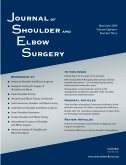
TRAUMA
Locking intramedullary nails vs. plates for function after proximal humeral fracture
This report has been verified
by one or more authors of the
original publication.
J Shoulder Elbow Surg. 2016 May;25(5):695-703.
72 patients with proximal humeral fracture were randomized to undergo surgical treatment via fixation with either intramedullary nails or interlocking plates for the purpose of comparing clinical outcomes throughout a 12-month follow-up period. Outcomes of interest included shoulder pain, function, shoulder passive range of motion, radiographic analysis, requirement of re-operation, and incidence of complications. Results demonstrated that the majority of clinical outcomes of interest (including pain, function, range of motion, neck-shaft angle) were comparable between study groups at 3, 6 and 12 months. However, internal rotation at 6 months, number of complications, and number of reoperations were significantly higher in the nail group when compared to the plate group.
Unlock the full ACE Report
You have access to {0} free articles per month.Click below to unlock and view this {1}
Unlock NowCritical appraisals of the latest, high-impact randomized controlled trials and systematic reviews in orthopaedics
Access to OrthoEvidence podcast content, including collaborations with the Journal of Bone and Joint Surgery, interviews with internationally recognized surgeons, and roundtable discussions on orthopaedic news and topics
Subscription to The Pulse, a twice-weekly evidence-based newsletter designed to help you make better clinical decisions
Exclusive access to original content articles, including in-house systematic reviews, and articles on health research methods and hot orthopaedic topics
Or upgrade today and gain access to all OrthoEvidence content for just $1.99 per week.
Already have an account? Log in


Subscribe to "The Pulse"
Evidence-Based Orthopaedics direct to your inbox.
{0} of {1} free articles
Become an OrthoEvidence Premium Member. Expand your perspective with high-quality evidence.
Upgrade Now













































































